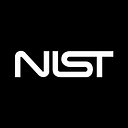Top 7 NIST Visuals of 2019
Mark Esser, Writer/Editor, National Institute of Standards and Technology
Science, while important, is often thought of as, well, kind of dry in the ocular department. The visuals commonly associated with scientific endeavors are charts and graphs, which are great if you’re a scientist, but for the rest of us, they’re as inscrutable as a professional poker player’s face. But the truth is, science does produce some great images, especially here at the National Institute of Standards and Technology (NIST).
In the past couple of weeks, we’ve shown you the top five blog posts and the top six news stories. Now it’s time for the top seven images! They say an image is worth a thousand words, so we’ve got about 7,000 words here, plus helpful captions.
Enjoy!
Closing in on a clear picture
NIST’s June Lau, in collaboration with Brookhaven National Lab and Euclid Techlabs, has invented a new type of electron microscope that gives us a freeze-frame look at the smallest parts of our world. To do this, the researchers shoot microwaves at an arbitrary frequency through a waveguide, so that only electrons catching onto their desired wave can get through the microscope. By controlling the waves, you control the time frame. It’s a whole new level of photography, capturing atomic-scale still images mid-motion.
Peek into a microscope to check out this ion trap, a means to confine atoms that have been ionized (electrons added or taken away). The trap itself is made from gold electrodes on a sapphire chip and was used to amplify and measure the tiny motions of a single magnesium ion using a “quantum squeezing” technique. The trap was also used to “entangle” multiple ions, a quantum feat that links their properties at a distance. Thanks to work like this, NIST is at the forefront of research in the revolutionary field of quantum information, which includes efforts to build a practical quantum computer.
This clock doesn’t need coffee
Next-generation technology, coffee bean for scale — the heart of this miniature atomic clock ticks at high optical frequencies based on the vibrations from rubidium atoms confined within. While standard atomic clocks use cesium atoms (which also currently provide the world’s definition of a second), optical clocks with rubidium atoms can be more precise (about 100 times better) and tick for longer on their own, without outside help. This may make the optical clock a solid candidate for a future redefinition of the second. Until now, optical clocks have been bulky and complex, used only as experiments by metrological institutions. Chip-sized optical clocks like this could eventually replace traditional oscillators in navigation systems and telecommunications networks. Shoutout to our collaborators at Caltech, Stanford and Draper Lab!
Working the glass
Jo Wu has been working as a glassblower for 12 years. In this photo, she’s working with a glass lathe that rotates the work evenly while she heats it from different angles to get at the heat gradient and subsequent geometry that she needs. The centrifugal force spins out a seal or diameter in the molten glass, so there’s no need for a blow hose. This vessel that she’s working with will become the base of an electrochemical reactor.
Chilling with Bill
Nobel laureate Bill Phillips took the stage at our Gaithersburg, Maryland, campus to teach us a thing or two about “Time, Einstein, and the Coolest Stuff in the Universe.” Here he is using liquid nitrogen to cool the air inside balloons so much that the atoms are barely moving, which makes the balloon flat like a pancake, or rather, a Frisbee. Liquid nitrogen has a number of other uses besides flattening balloons. Its ultracold temperature, -195.8 C or -320 F, for example, cools the atoms inside NIST’s F2 atomic clock, which allows the clock to be so accurate that it won’t gain or lose a second in 300 million years. Cool!
The Astin family
NIST had a special group of visitors this year — descendants of former NIST director Allen Astin, including grandsons Sean Astin, of Lord of the Rings and Stranger Things fame, and Mackenzie Astin, of Homeland and The Magicians, and son John Astin, known best for his role in the 1960s Addams Family TV show. The Astins toured NIST laboratories before posing for a photograph with the NIST grounds crew for the dedication of a new garden to their grandfather. Pictured, left to right, are: Jennifer Astin, John Miller, Mackenzie Astin, John Hagan, Carey Clark, Jack Messner, Alteration and Maintenance Group Leader Robert Mathews, Nathaniel Brown, John Astin, Valerie Astin, Gregory Frazier, Sean Astin, John Murray, Supervisory Gardener Patrick Murphy, Joshua Jarrell and Rabie Abdel-Halim. Grounds crew member not pictured: Arthur Colemon.
Keeping robots healthy
Your toe bone is connected to your foot bone, then your heel bone, then your ankle bone … so when something hurts, doctors at your checkup can go down the line to see where the problem is. At NIST, we’re doing the same thing for robot workcells. We are developing fast, efficient ways to evaluate smart manufacturing systems so that manufacturers across the country can check up on the health of their robot workcells and locate problems when (and even before) they happen. That way, it saves time and money to keep business running smoothly.
This post originally appeared on Taking Measure, the official blog of the National Institute of Standards and Technology (NIST) on December 17, 2019.
To make sure you never miss our blog posts or other news from NIST, sign up for our email alerts.
About the Author
Mark Esser is a writer in the NIST Public Affairs Office and the editor of Taking Measure (this blog). He also writes speeches. When he’s not struggling to cleverly turn a phrase, he enjoys playing classical guitar and weightlifting.
